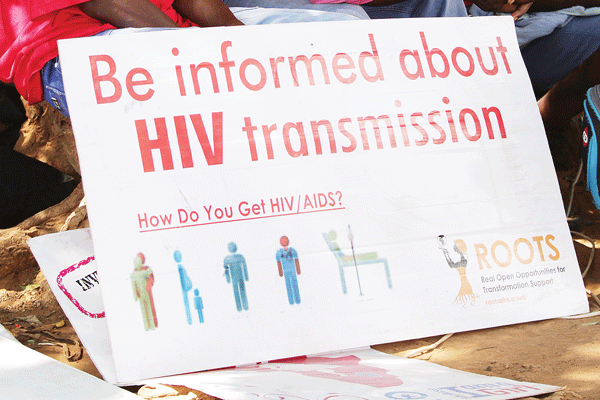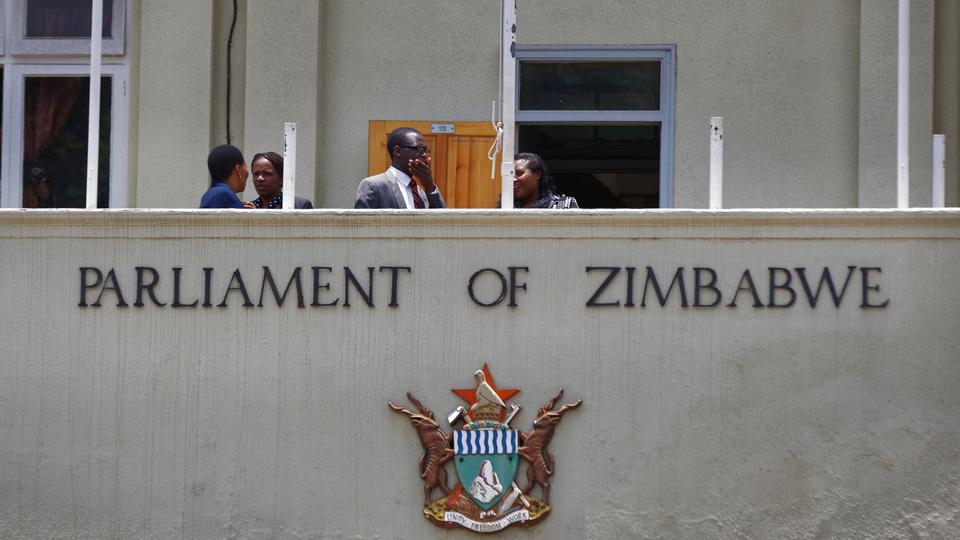
TWO lone figures stand a few metres from Entrance K of the RAI Convention Centre, Netherlands where the biggest Aids conference is being held. They are holding up banners denouncing circumcision. Their banners are boldly inscribed: ‘Condoms prevent HIV, not circumcision’.
BY PHYLLIS MBANJE

The pair is part of the VMMC Experience Project which has been in the trenches for years, trying to argue and provide evidence that circumcision campaigns might have been an empty and futile process which was shoved down the throat of many African states and other resource-starved nations. They claim the efficacy was overrated and exaggerated.
But no one takes notice of the two and strangely, the biggest Aids conference with over 10 000 delegates did not have a single session or discussion on circumcision or even did it to celebrate the ‘success’ stories or discuss challenges posed by the procedure.
This is at loggerheads with the time when the ‘faze’ was introduced in Africa a few years ago. It was celebrated as the wonder prevention strategy that would guarantee 60% protection. This figure has been disputed and challenged repeatedly.
The “voluntary medical male circumcision” (VMMC) public health programme is the first mass surgical campaign in human history. Because it mainly targets Africans, organisations like the VMMC Experience Project have questioned whether there are underlying racial motives.
They contend that for centuries, western stereotypes have held that African men were lascivious or hyper sexed, unable to control their sexual urges.
- Chamisa under fire over US$120K donation
- Mavhunga puts DeMbare into Chibuku quarterfinals
- Pension funds bet on Cabora Bassa oilfields
- Councils defy govt fire tender directive
Keep Reading
Prince Hillary Maloba, a native Kenyan, director of the VMMC Experience Project, and the driving force behind the investigation, said: “Male circumcision, as a project that has been applied to us Africans, has failed to reduce HIV the way we were told. Two, we view it as a violation of human rights. Why target only one race in the entire world?”
The mass circumcision campaign was introduced to reduce the incidence of HIV in 14 sub-Saharan African countries that did not initially practise genital cutting, including Zimbabwe.
However, data indicated that the African HIV epidemic only worsened since 2010 — shortly after VMMC was implemented. For the first time since the war on Aids began, HIV was back on the rise.
Despite the rigorous campaigns for the prevention strategy which was famed for reducing HIV transmission, there has not been conclusive research to validate the claims which have been disputed by various studies.
In most European states, the practice is not even one of their priority areas in the prevention of HIV.
But despite these concerns, the proponents of the strategy insist it protects against HIV and is worth every penny that has been spent in cascading it down to the poor nations.
The World Health Organisation (WHO) agrees that medical male circumcision reduces the risk of female-to-male sexual transmission of HIV by approximately 60%. Since 2007, WHO and UNAids have recommended it as an additional important strategy for HIV prevention.
WHO says medical male circumcision offers excellent value for money, saving costs by averting new HIV infections and reducing the number of people needing HIV treatment and care.
As a one-time intervention, medical male circumcision provides men with life-long partial protection against HIV as well as other sexually transmitted infections.
WHO recommends that VMMC should always be considered as part of a comprehensive HIV prevention package of services and be used in conjunction with other methods of prevention, such as female and male condoms.
Scientifically, the removal of the foreskin of the male sexual organ reduces significantly the chances of contracting HIV. This is because the inner aspect of the foreskin is highly susceptible to HIV infections.
Microscopic examination of the foreskin has shown that while the skin provides a thick protective barrier, the inner surface of the foreskin is much thinner, resembling the inner lining of the mouth or eyelid.
“In uncircumcised men, Langerhans cells (immune cells that are primary targets for HIV transmission) are more richly concentrated near the surface of the foreskin,” says Anthony Fauci, director of the US National Institute of Allergy and Infectious Diseases in Bethesda.
Following infection, Langerhans cells not only serve as reservoirs for replicating virus, but also transport the virus to nearby lymph nodes where HIV spreads to other immune cells.
In fact, the foreskin’s anatomical function actually amplifies the risks. In uncircumcised men, the foreskin covers and protects the tip of the male sexual organ, paradoxically making the skin more delicate and prone to microscopic abrasions.
These tiny injuries promote inflammation, Fauci says, allowing the virus to come into closer contact with target immune cells. The moisty environment that forms under the foreskin also enhances the growth of microbes on the organ’s tip, Fauci adds, further stimulating immune responses near the skin’s surface.
At the very least, the foreskin increases contact time with the virus following unprotected sexual intercourse when infectious fluid becomes trapped.
The Zimbabwe experience
VMMC is listed in the country’s National Combination Prevention Strategy, but the uptake among Zimbabwean men aged between 14 and 49 remains low.
Zimbabwe, which recently celebrated circumcising one million men, missed its target of circumcising 1,3 million men in 2015.
The director for the Aids and TB unit in the health ministry Owen Mugurungi said Zimbabwe had missed the 2015 target simply because of challenges with resource mobilisation.
“We had delays in rolling out the project due to resources, but once we started we covered a lot of ground. We have done remarkably well, given the time frame,” he said.
Another issue, according to Mugurungi, was that the country traditionally did not subscribe to circumcision and some people had reservations about the process.
Speaking on the assertions by the anti-circumcision lobbyists, Mugurungi maintained that the strategy was a proven prevention strategy.
“Circumcision is a worthy strategy for preventing the spread of HIV and is for the public good. The concerns being raised are superseded by the fact that the method has been working well.”
Mugurungi added that research had been conducted involving men who have gone under the knife and those who had not. Both groups were part of a risky population.
“Results showed that there was a 60% reduction of HIV among those who had been circumcised and that was the proof which validated that percentage,” he said.
In terms of effective methods for mitigating against HIV, Mugurungi said the condom was still in first place followed by other methods like treatment, Pre Exposure Prophylaxis and Post Exposure Prophylaxis.
He, however, conceded that in countries like the United States there were issues of circumcision of infants, with reports that men were complaining of lack of sensitivity after removal of the foreskin.
“On that subject, maybe we need to talk about this, but it should not obliterate the common good,” he said.
Zimbabwe has had its fair share of concerns regarding circumcision. In 2013 a man from Chiredzi claimed to have become impotent after being circumcised in the Pinda Musmart HIV and Aids Campaign and made headlines when he then demanded his foreskin back.
Other communities felt it was “unZimbawean” to go for circumcision while there were rampant claims of penile foreskin harvesting.











